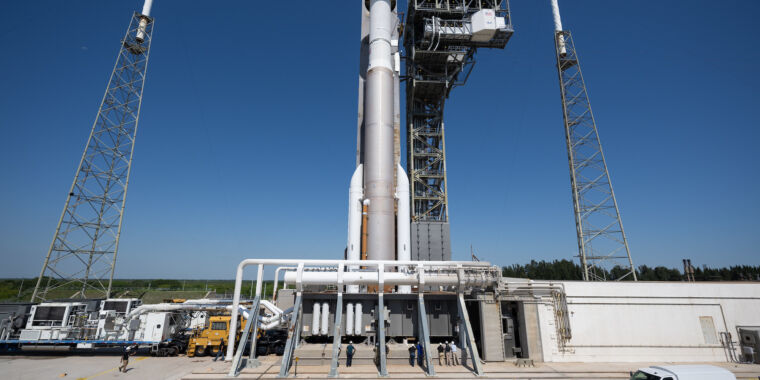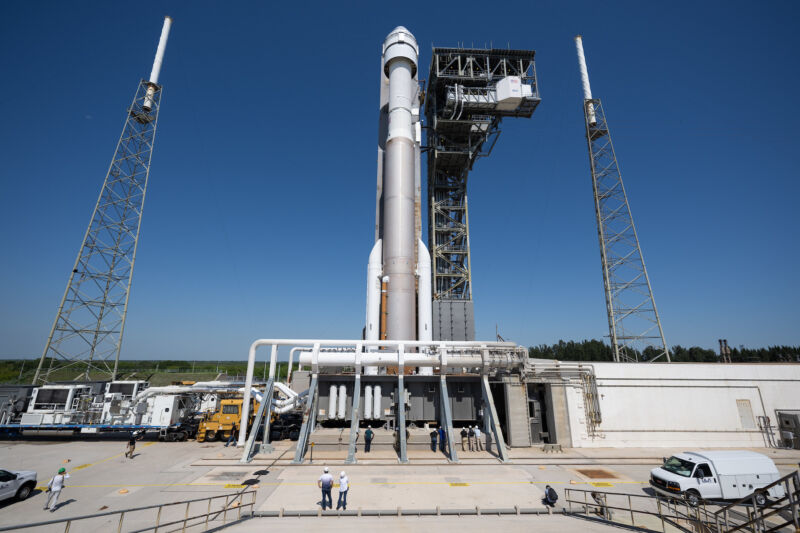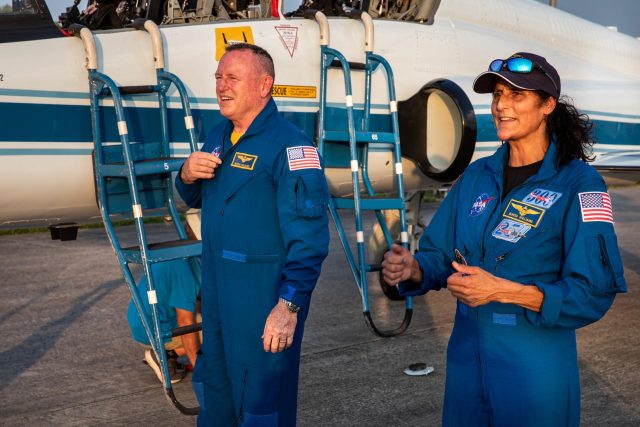

NASA and Boeing officials are preparing for a second attempt to launch the Starliner spacecraft’s first crewed test flight on Saturday from Space Force Station Cape Canaveral in Florida.
Boeing’s Starliner capsule is scheduled to launch aboard a United Launch Alliance Atlas V rocket at 12:25 PM EDT (16:25 UTC). NASA Commander Butch Wilmore and Pilot Sonny Williams, both veteran astronauts, will take the Starliner spacecraft on its first flight into low Earth orbit with a crew on board.
The first crew flight on a new spacecraft is not an everyday occurrence. Starliner is the sixth crewed spacecraft in the history of the US space program, following Mercury, Gemini, Apollo, the Space Shuttle, and SpaceX’s Crew Dragon. NASA signed a $4.2 billion contract with Boeing in 2014 to develop Starliner, but the project fell years behind schedule and cost Boeing nearly $1.5 billion in cost overruns. Meanwhile, SpaceX won a contract at the same time as Boeing and began launching astronauts aboard the Crew Dragon four years ago.
Now, it’s finally Starliner’s turn. The successful crew test flight will pave the way for six operational Starliner flights to transport astronauts to and from the International Space Station (ISS).
Assuming the test flight lifts off from Earth on Saturday, the spacecraft is scheduled to dock at the ISS at 1:50 PM EDT (17:50 UTC) on Sunday to begin a stay of at least eight days. Once managers are satisfied that the mission has achieved all planned test objectives, and awaiting good weather conditions at the Starliner landing zone in the western United States, the spacecraft will leave the station and return to Earth for a parachute-assisted landing. If the mission lifts off on Saturday, the earliest nominal landing date would be Monday, June 10.
Wilmore and Williams have been here before. On May 6, astronauts were strapped into their seats inside the Starliner cockpit awaiting liftoff for a trip to the International Space Station. A valve malfunction on the Atlas V rocket prevented a launch that day, and officials later discovered a helium leak in the Starliner’s service module that delayed the mission until the end of this week.
Flying as it is
After weeks of reviews and analysis, managers determined that the Starliner was safe to fly as it was leaking. The spacecraft uses helium gas to pressurize its propulsion system and push hydrazine and nitrogen tetroxide fuel from internal tanks into the capsule’s thrusters.
“When we looked at this problem, it wasn’t about trading,” said Mark Nappi, Boeing vice president and Starliner program manager. “The question came back: Is it safe or not? And it is safe, and that’s why we decided we could fly with what we have.”
Ground teams tracked the leak to the edge of one of four doghouse-shaped thrust chambers around the perimeter of the Starliner spacecraft’s service module. In a worst-case scenario, if the condition worsens during flight, ground controllers can isolate it by shutting off the manifold feeding the leak. If the leak doesn’t get worse, engineers are confident they can manage it without any major impacts on the mission.
“We looked hard at our options with this particular flange,” said Steve Stich, director of NASA’s Commercial Crew Program, who oversees the agency’s contract with Boeing. The rim contains a helium channel and lines for the spacecraft’s toxic and oxidizing fuel, making repair “problematic,” Stitch said.

In order to safely repair the leak, which officials believe was likely caused by a defective seal, ground teams will have to separate the capsule from the Atlas V rocket, return it to the hangar, and drain its propellant tanks. This will likely postpone the Starliner’s long-awaited test flight until late this year.
But the leakage is relatively small and stable. “It’s about a half pound a day out of 50 pounds of total capacity in the tank,” Stitch said.
“In our case, we have a margin in the helium tank, and we put a lot of effort into understanding that margin and understanding the worst cases, and taking the time to review that data,” Stitch said. “We can manage that leakage, by looking at it before launch, and then if it becomes larger during flight, we can manage it.”

“Web maven. Infuriatingly humble beer geek. Bacon fanatic. Typical creator. Music expert.”





More Stories
Scientists confirm that monkeys do not have time to write Shakespeare: ScienceAlert
SpaceX launches 23 Starlink satellites from Florida (video and photos)
A new 3D map reveals strange, glowing filaments surrounding the supernova